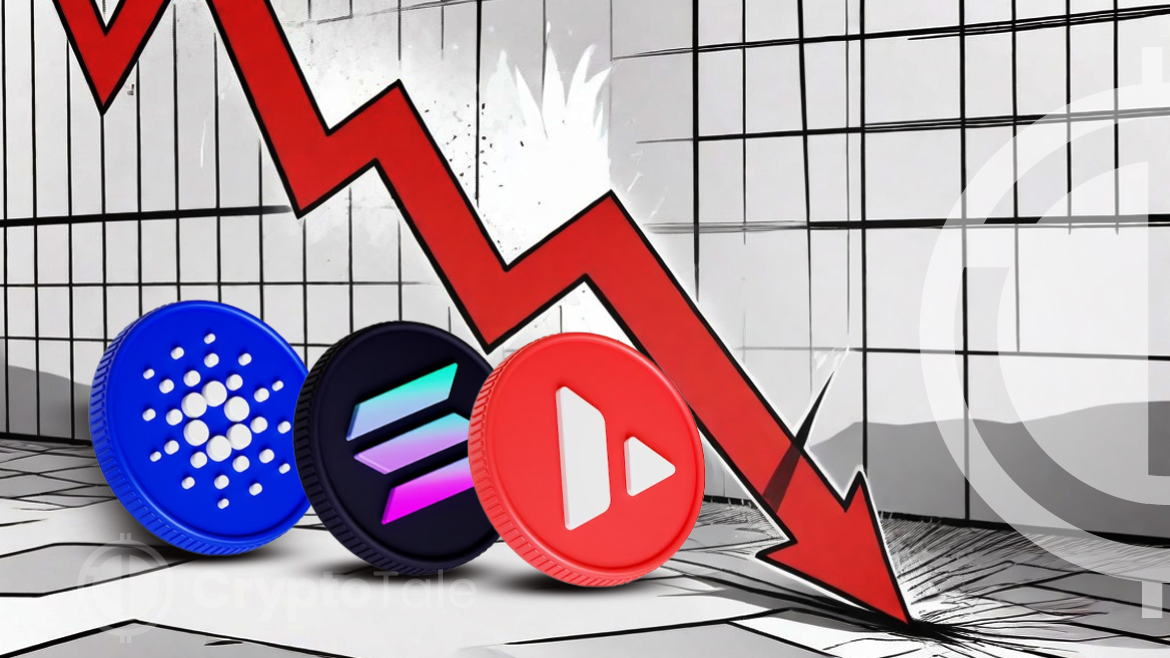- Despite overall market downturn, Solana’s maintained network activity suggests potential resilience and reversal capability.
- Decline in Total Value Locked across networks hints at reduced liquidity and possible investor confidence challenges in DeFi.
- Correlation in altcoin prices underscores broader market sentiment, with Solana emerging as a potential outlier amidst recent declines.
Altcoins like Cardano (ADA), Solana (SOL), and Avalanche (AVAX) have shown dramatic shifts in market behavior. Initially, these tokens experienced significant price declines, with ADA dropping by 9.45%, SOL by 7.73%, and AVAX by 6.03% as of a specific point in late March. This downward trend was marked by successive lower lows and lower highs, reflecting a strong bearish sentiment among investors.
However, the scenario has shifted notably in the more recent period. Currently, ADA is trading at $0.486526, marking a 5.64% increase with a trading volume of $819,723,150 over the last 24 hours. Similarly, AVAX is now priced at $37.76, showing a 4.79% rise with a trading volume of $947,809,829. Most impressively, SOL has surged to $151.27, which is an 8.45% increase, backed by a substantial trading volume of $6,002,630,990.
Despite the recovery in altcoin prices, Solana stands out for maintaining its network activity, whereas Cardano and Avalanche have witnessed a dip in activity on their respective networks. This disparity suggests that SOL may be better positioned for a potential reversal based on its protocol performance, while ADA and AVAX could face stagnation in the near term. Despite this, decentralized exchange (DEX) volumes have seen an uptick across all networks, indicating heightened market volatility and investor participation amid the price downturn.
Nevertheless, there has been a decline in the Total Value Locked (TVL) across Cardano, Solana, and Avalanche networks, signaling a reduction in the amount of assets locked in decentralized finance (DeFi) protocols. This decrease in TVL could have broader implications for liquidity and investor confidence within these ecosystems.
Additionally, a decline in development activity across these networks raises concerns about the pace of innovation and improvement within their respective ecosystems.






